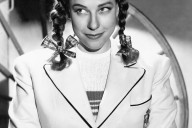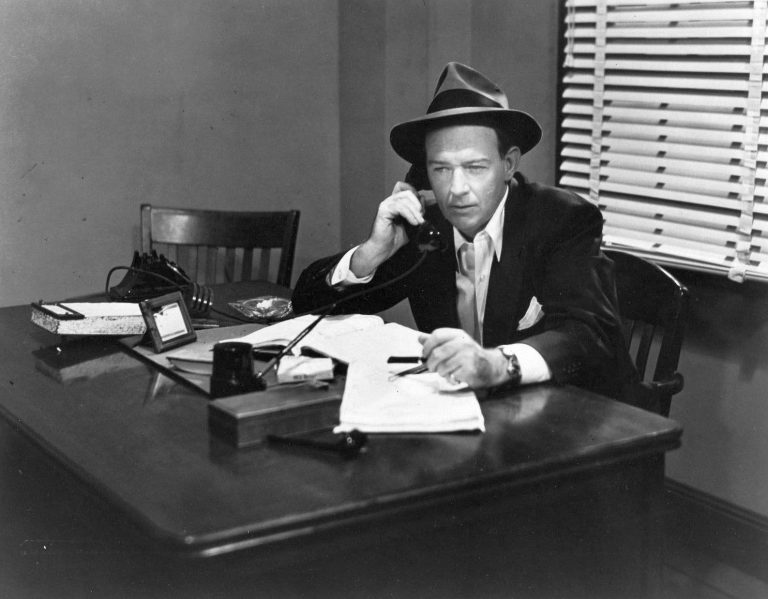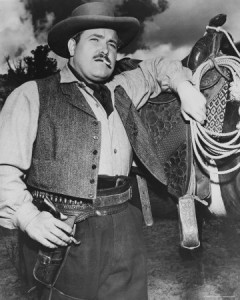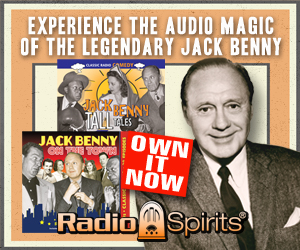By Ivan G Shreve Jr
In 1905, one of radio and television’s most prized sidekicks was born in Oakland, CA to a family of show business performers. His father, “Big Ed” Anderson, performed in minstrel shows, while his mother Ella Mae was a tightrope walker (until a fall put an end to her career). As such, birthday celebrant Eddie Anderson was motivated to follow in his parents’ footsteps, joining with his older brother Cornelius in a group called The Three Black Aces. The Aces started out singing in hotel lobbies for spare change before working their way up through the vaudeville circuit to play the Roxy and Apollo theaters…and eventually the Los Angeles Cotton Club out west.
Eddie could sing and dance, but he sang with a distinctive gravel voice because he had ruptured his vocal chords as a kid—he and his friends hawked newspapers, and believed the person with the loudest voice sold the most. Breaking into the movies, Anderson’s first onscreen credit was 1932’s Hat Check Girl, in which he played a waiter. For the most part, those types of roles (along with porters, bootblacks and other servile occupations) would be his cinematic bread and butter, although he did land the prestigious part of “Noah” in The Green Pastures. Eddie’s biggest break would come about from a one-shot appearance on a March 28, 1937 Jack Benny Program broadcast in which he played an insouciant train porter. His raspy voice registered with Benny and listeners, and the comedian used him intermittently before finally finding a permanent place for him on the program as wisecracking valet, Rochester Van Jones. His popularity on the program would result in his being billed as Eddie “Rochester” Anderson for the remainder of his career.
At a time when it was difficult for African-American performers to get work in the entertainment industry—and even harder to find parts that weren’t mired in stereotypes—Eddie Anderson was the exception to the rule. (He may have played a valet on radio, but he earned a salary generous enough that he soon had his own manservant off-mike.) Granted, Eddie was assigned a traditionally subservient role on the Benny program…but the Rochester character enjoyed an unusual relationship with his employer in that he was more of a trusted confidant than a lackey, and it often seemed as if he were really in charge. He slowly started to replace Mary Livingstone as Jack’s foil (Mary’s mike fright gradually reduced her participation on the program); never hesitating to poke fun at his employer’s vanity, miserliness and miserable violin playing.
Benny took a lot of grief from the prevailing attitudes of the times for hiring Eddie to be a regular. It was often difficult, for example, to take Anderson along on tours of army bases and hospitals because of the discrimination in the Armed Forces, so the Rochester character was usually featured on the phone with his “boss.” But, Benny knew that “Rochester” was very popular with radio audiences, and was never hesitant about featuring him prominently on the program. Benny also took pains to insure that any jokes regarding Rochester’s race were innocent and without malice, and that they came from the character and not he or any of the other members of the cast. (An example: a viewer once wrote in and took Jack to task for a show in which Rochester decked Jack while sparring in a boxing ring; the comedian wrote him back and tactfully explained that it wouldn’t have been as hilarious if he had hit his employee.)
Eddie’s success on the Benny program led to his appearing with his “boss” in three feature films based on the radio show: Man About Town (1939), Love Thy Neighbor (1940) and Buck Benny Rides Again (1940). Anderson also played Jack’s sidekick in the 1943 film The Meanest Man in the World—though his character goes by “Shufro” in that vehicle. His association with the comedian often echoed in the films he made without Benny. In 1941’s Topper Returns, his chauffeur character plans to leave the employ of Cosmo Topper (Roland Young) after tangling with ghostly apparitions, announcing that he’s going back to Benny because “ain’t nothin’ like this ever happened there.” But, Anderson was able to keep a high profile in non-Benny vehicles, among them Jezebel (1938), You Can’t Take It With You (1938), You Can’t Cheat a Honest Man (1939), You Can’t Get Away With Murder (1939), Gone With the Wind (1939), Tales of Manhattan (1942), Cabin in the Sky (1943—which may very well be his finest hour onscreen), Brewster’s Millions (1945), I Love a Bandleader (1945—with Phil Harris!) and The Show-Off (1946). His last feature film was the all-star comedy extravaganza It’s a Mad Mad Mad Mad World (1963), which also features a cameo from his famous boss…though the two of them do not, sadly, appear together. In this, Eddie plays one of two cab drivers (the other is Peter Falk) hired to drive the main characters to “the big W” in search of buried loot.
Anderson followed Benny into television and, along with announcer Don Wilson, was pretty much the only cast member from the radio version to stay with the program until it left the air in 1965. He did guest bits on such series as Bachelor Father, It Takes a Thief and Love, American Style…and that distinctive voice of his was used for Bobby “B.J.” Mason in one of his last show business gigs: a Hanna-Barbera animated series based on the Harlem Globetrotters. When his “boss” passed away in 1974, Eddie was clearly choked with emotion by the news as he gave a TV interview and spoke about the comedian with the greatest devotion and respect. Three years later—and it’s only fitting, since Anderson had a habit of never being on time during his stint with Benny—he followed his boss when he left this world for a better one on February 28, 1977.
Copyright 2013 Ivan G Shreve Jr and RSPT LLC. All rights reserved.














